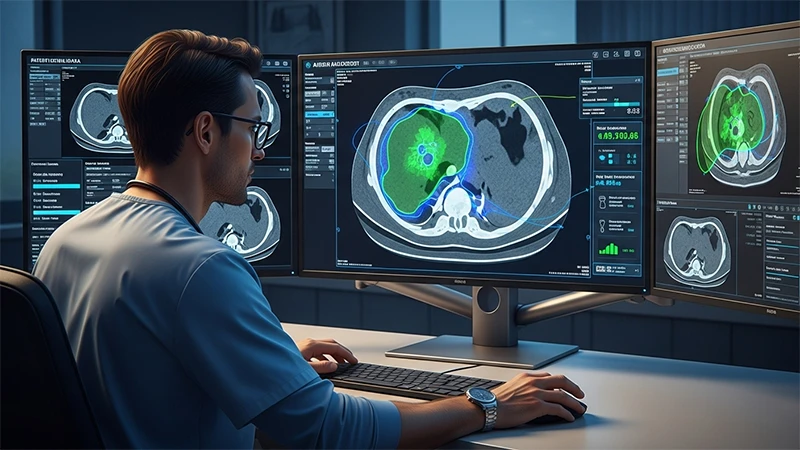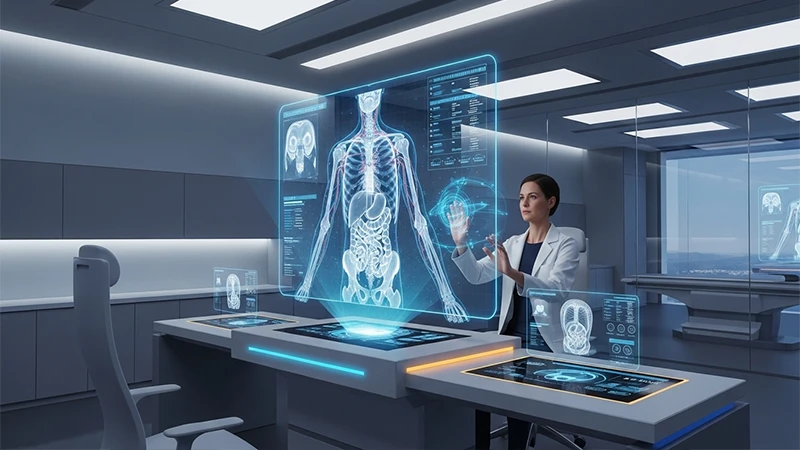Will AI Replace Radiologists and Technologists? An Honest Look at the Future
For several years, headlines have sparked a debate in the medical community: with the rapid advancement of Artificial Intelligence, will computers soon make human radiologists and technologists obsolete? While it's true that AI is poised to revolutionize the field, the overwhelming consensus among experts is that it will lead to an evolution of these roles, not an elimination.
The future of radiology is not "Man vs. Machine," but "Man with Machine." Here’s why.
What AI Is Good At: The Superhuman Assistant
AI, particularly deep learning, is incredibly powerful at specific, narrow tasks. It can be trained to perform repetitive perceptual tasks with a level of consistency and speed that humans cannot match.
- Detection: AI can screen thousands of images and detect subtle patterns that might signal a tiny lung nodule or a faint fracture.
- Quantification: It can measure tumor volumes or blood flow with perfect, reproducible precision.
- Triage: It can work 24/7, tirelessly flagging critical studies for immediate attention.
In essence, AI is the ultimate assistant, capable of processing vast amounts of data and highlighting what might be important.

What AI Is (Currently) Bad At: The Human Element
The practice of medicine is far more than just pattern recognition. The roles of radiologists and technologists require a range of uniquely human skills that AI cannot replicate.
- Holistic Synthesis: A radiologist doesn't just look at an image; they synthesize the findings with the patient's clinical history, lab results, and previous exams to form a diagnosis and recommend next steps. AI lacks this broad clinical judgment.
- Complex Problem-Solving: AI struggles with rare diseases or unusual presentations it wasn't trained on. A human expert can use deductive reasoning and experience to solve novel diagnostic puzzles.
- Patient Interaction & Care: A technologist's job is deeply human. They must comfort anxious patients, adapt scanning procedures for individuals who are in pain or unable to cooperate, and ensure patient safety—tasks that require empathy and critical thinking.
- Communication: A radiologist must effectively communicate their complex findings to other physicians. This requires nuance, understanding, and collaborative discussion that is far beyond the scope of current AI.
The "Augmented" Professional of the Future
Instead of replacement, the future will feature the "augmented" professional, whose skills are amplified by AI tools.
- The Augmented Radiologist: Will be freed from the most tedious detection tasks to focus on complex cases, consult with clinicians, and perform image-guided procedures. They will act as a "high-level supervisor" of AI outputs, using their judgment to validate or dismiss the algorithm's findings and integrate them into a complete diagnostic picture.
- The Augmented Technologist: Will use AI-powered tools to automate scan setup, optimize protocols in real-time for lower radiation dose, and pre-screen images for quality control. This allows them to spend more time on what matters most: direct patient care and safety.

Conclusion: A More Powerful, Not a Replaced, Profession
The fear of AI replacement often stems from a misunderstanding of what radiologists and technologists actually do. Their jobs are not just about finding pixels on a screen; they are about patient care, clinical integration, and complex problem-solving. AI will undoubtedly handle more of the "finding pixels" part of the job, but this will only elevate the importance of the human skills that surround that task. The radiologist who leverages AI will be more efficient and effective than one who doesn't, but they will not be replaced by it.


Comments